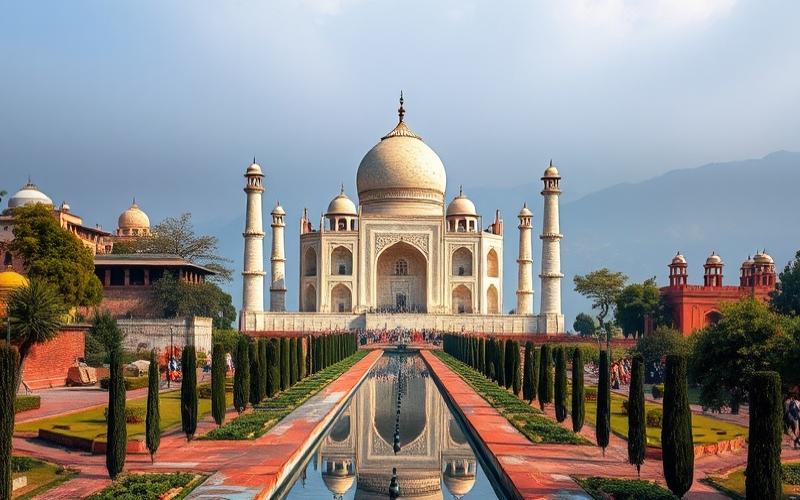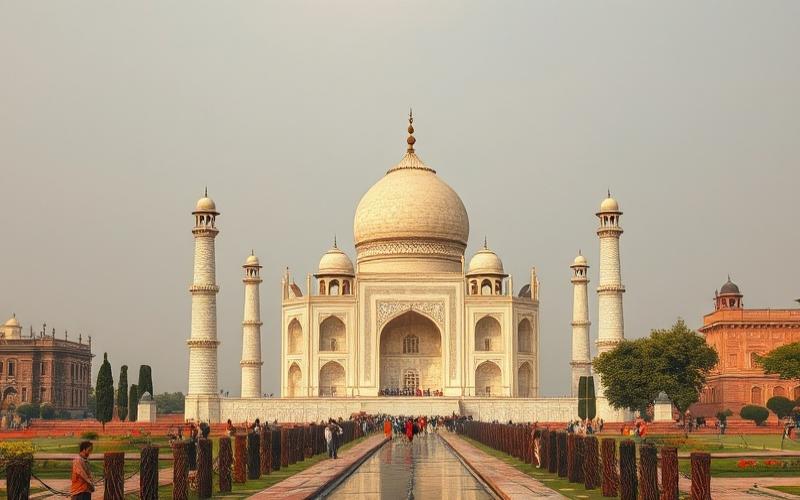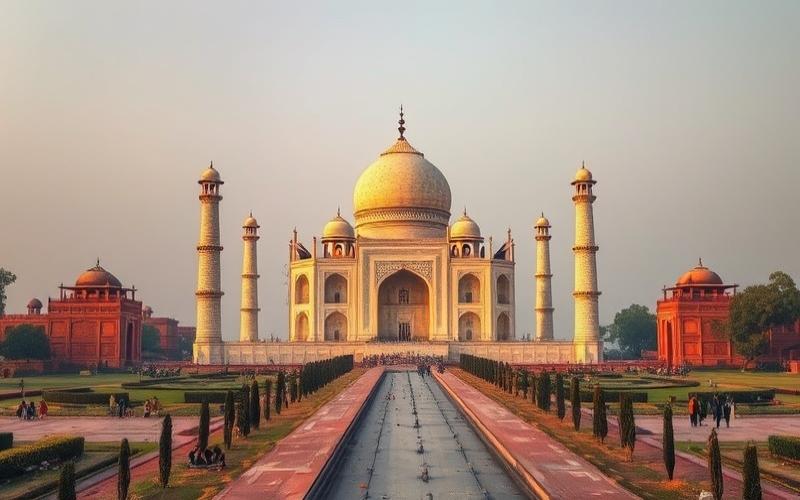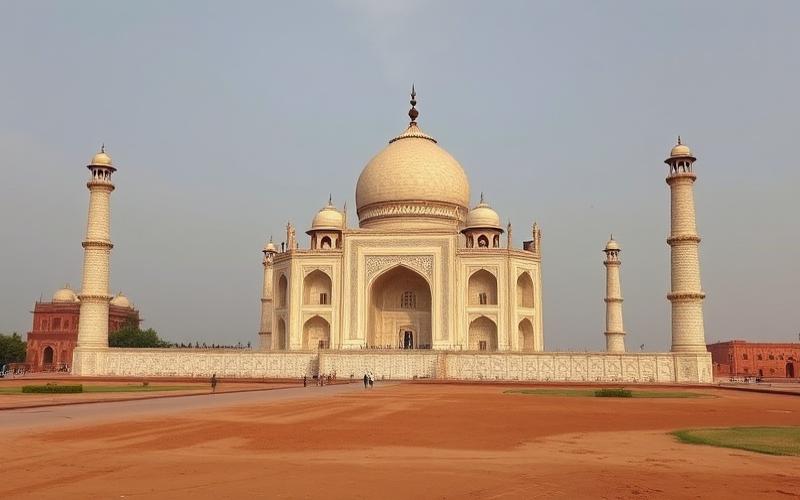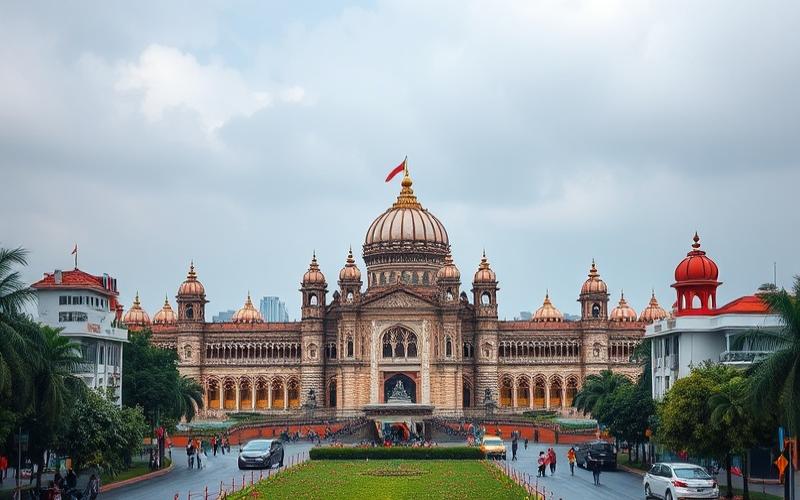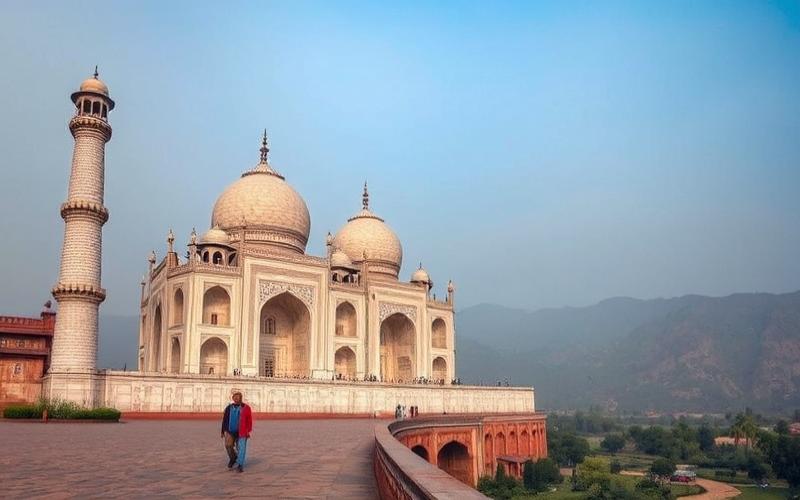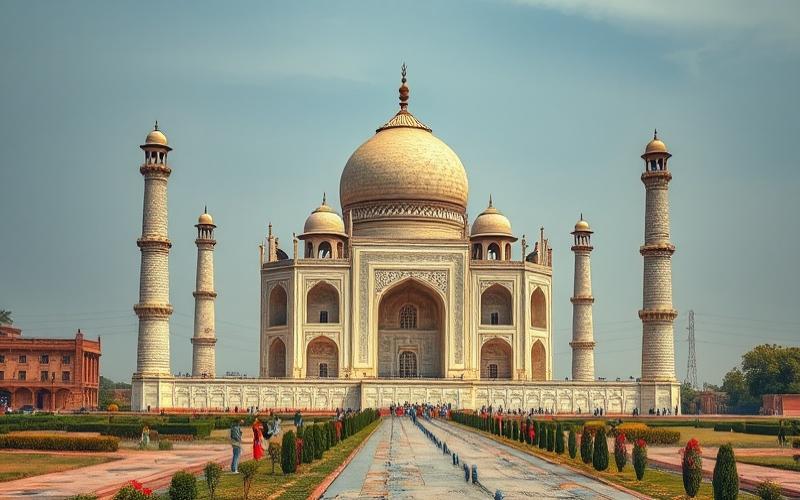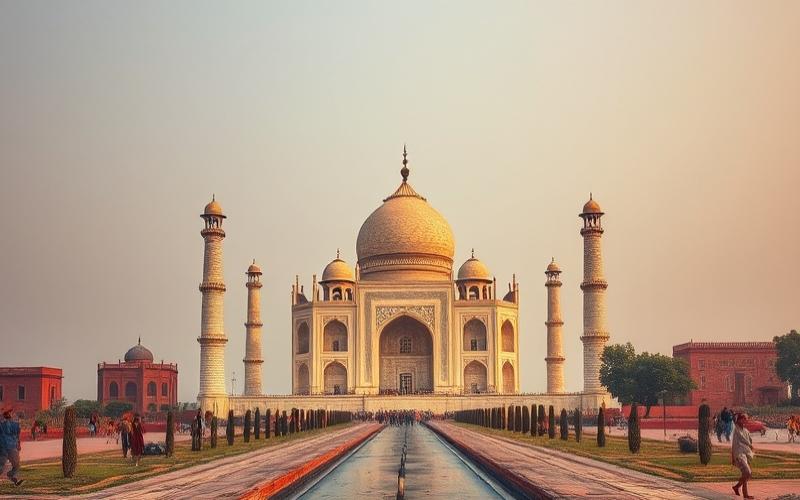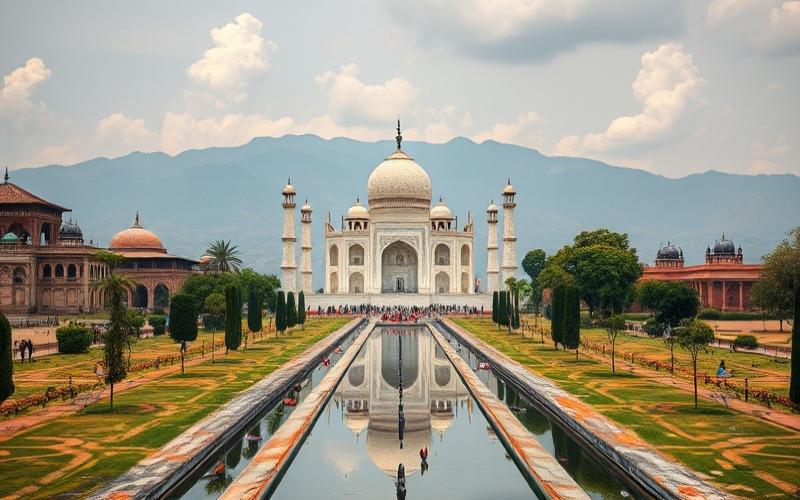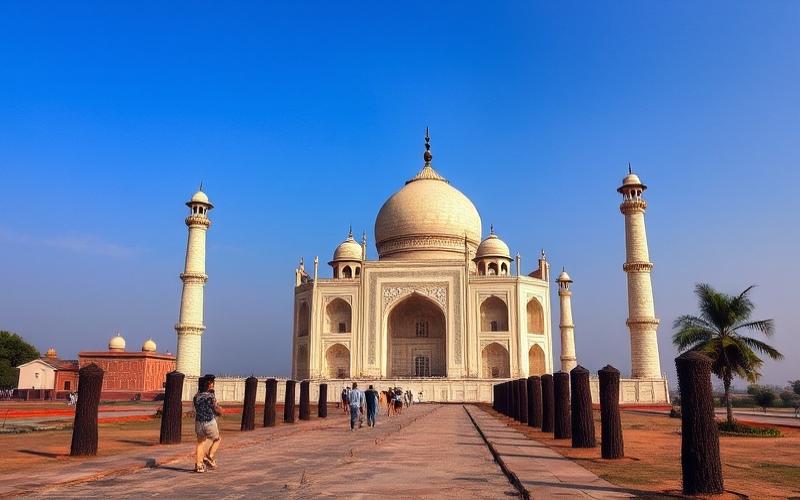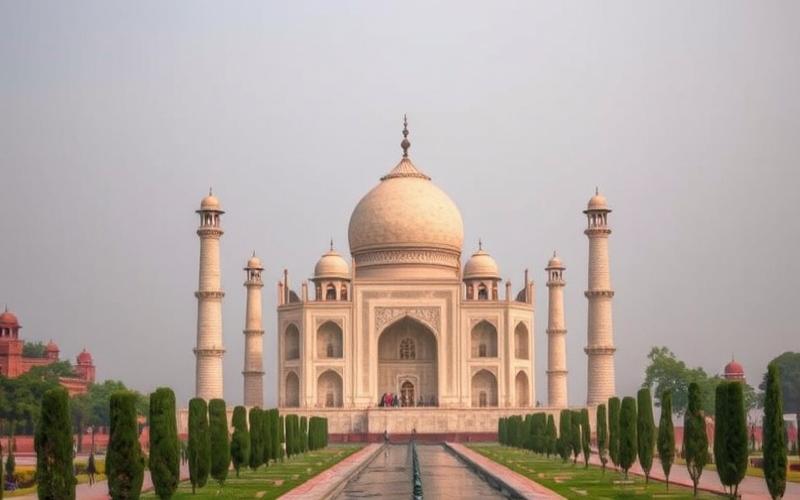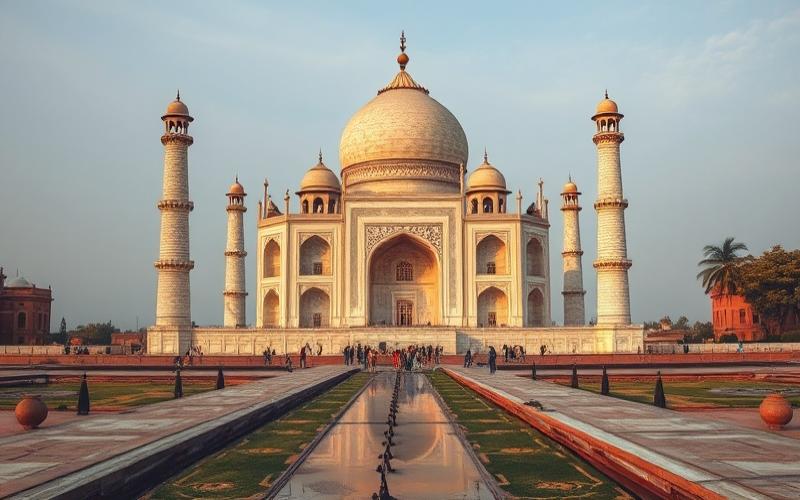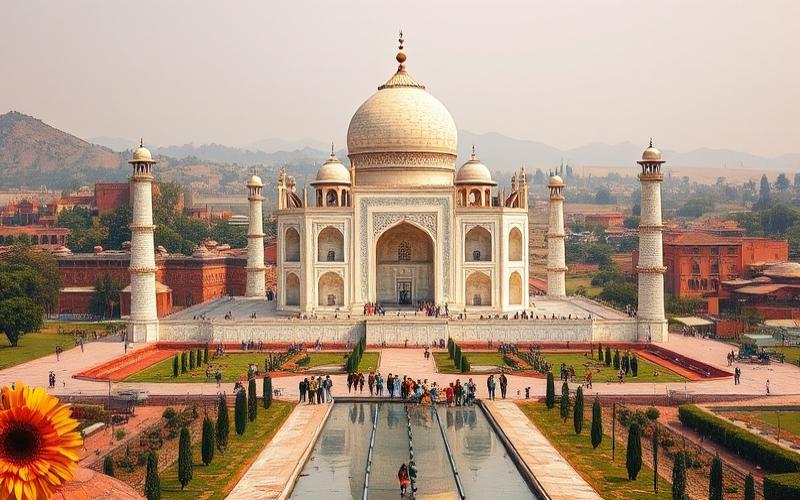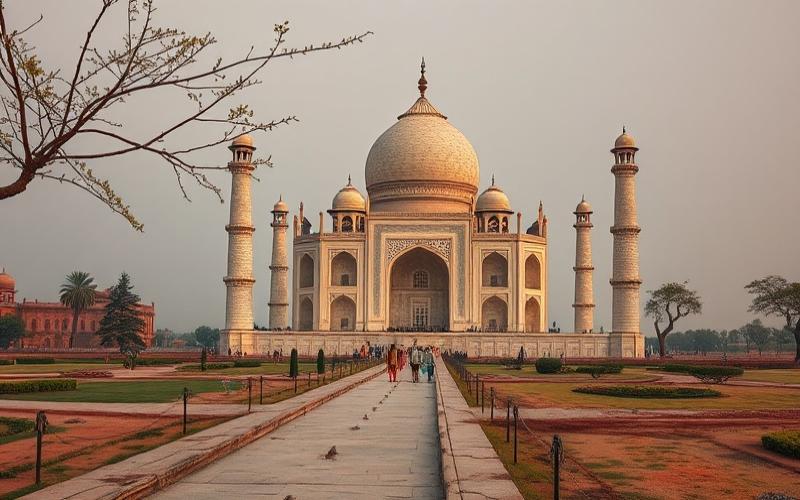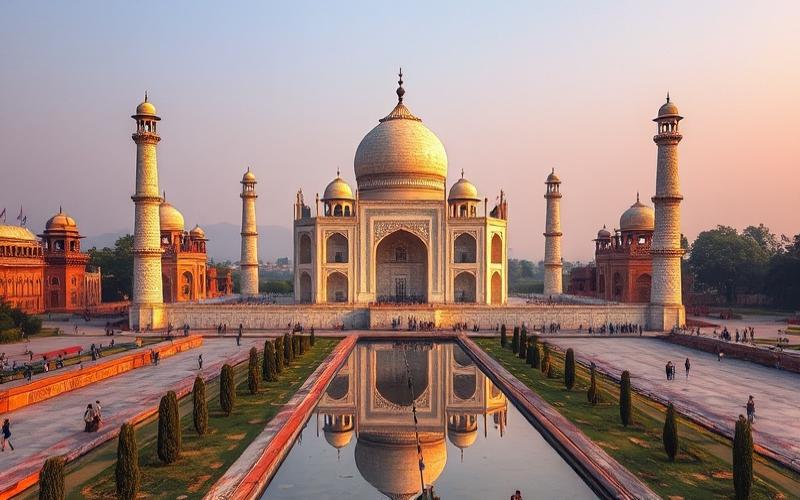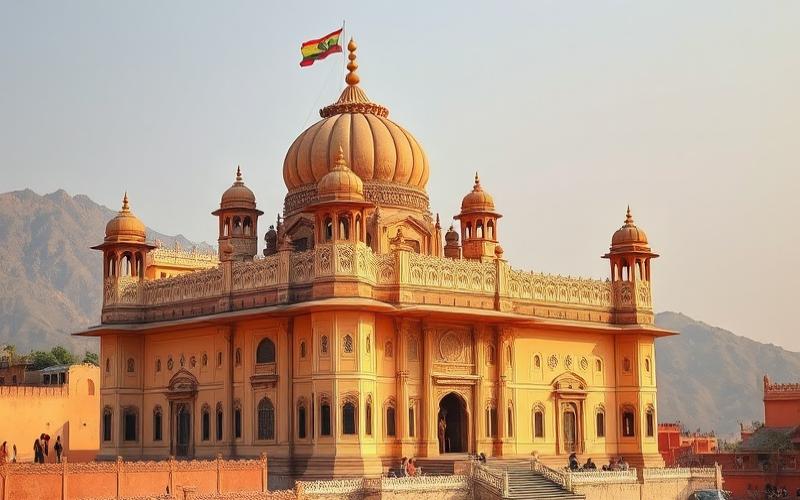
 Published on and written by Cyril Jarnias
Published on and written by Cyril Jarnias
India, a dynamic and rapidly growing nation, features a fascinating yet complex social security system, representing a crucial safety net for its citizens.
Through a mosaic of social insurance schemes, the country aims to address the diverse needs of its large and heterogeneous population, offering benefits ranging from old-age pensions to healthcare allowances.
With an abundance of workers in both the formal and informal sectors, enrollment in these programs becomes essential to ensure financial and medical support for Indian households.
Explore how these social security mechanisms integrate into people’s daily lives and what this means for the socio-economic future of the subcontinent.
Social Protection System: An Overview in India
Historical Overview
The social protection system in India has gradually evolved since the colonial era, influenced by labor movements and post-independence public policies. Labor legislation was initially built around sectoral laws (Sickness Insurance, Provident Fund, etc.), before undergoing a major reform in 2020 with the adoption of four new Labor Codes, including the Social Security Code, aiming to simplify and modernize the regulatory framework while extending coverage to new groups, although some observers criticize a weakening of workers’ rights.
Main Government Agencies
- Ministry of Labour and Employment: general oversight of social security.
- Employees’ State Insurance Corporation (ESIC): health insurance and related benefits.
- Employees’ Provident Fund Organisation (EPFO): management of pension and provident funds.
- National Social Assistance Programme (NSAP): social assistance for the most vulnerable.
- State governments: administration of certain specific schemes and co-financing of health.
Relevant Laws and Regulations
- Constitution of India (Articles 38, 39, 41, 42, 43): guiding principles of social policy.
- Employees’ State Insurance Act (1948): health insurance for formal sector salaried workers.
- Employees’ Provident Funds and Miscellaneous Provisions Act (1952): pension and insurance funds for employees.
- Mahatma Gandhi National Rural Employment Guarantee Act (MGNREGA) (2005): rural employment guarantee.
- Social Security Code (2020): integration and simplification of various existing social security laws.
Types of Benefits Offered
| Benefit Type | Main Schemes | Target Population | Key Features |
|---|---|---|---|
| Health Insurance | ESIC, RSBY/Ayushman Bharat | Formal sector, poor, informal | Hospitalization coverage, health card |
| Unemployment Benefits | ESIC (since 2010), MGNREGA | Contributing employees, rural | Unemployment allowances, guaranteed rural employment |
| Retirement Pensions | EPFO, NSAP, Atal Pension Yojana | Formal sector employees, poor elderly | Contributory or non-contributory pension |
| Disability Assistance | NSAP, State schemes | Persons with disabilities | Financial allowances, social assistance |
Recent Statistics
- RSBY/Ayushman Bharat: approximately 70 million people enrolled in 2010 (24% of target population); the Ayushman Bharat program launched in 2018 aims for over 500 million beneficiaries.
- EPFO: over 220 million accounts opened, but only a fraction receive regular benefits.
- ESIC: covers approximately 135 million people (insured individuals and family members).
- NSAP: over 22 million recipients of social allowances (elderly, widows, disabled).
- MGNREGA: 135 million households registered, but effective coverage varies by year.
Current Challenges
- Inclusion of informal and rural workers: nearly 90% of the workforce remains in the informal economy, with very limited coverage.
- Low effective coverage rate: many potential beneficiaries do not receive benefits.
- Administrative complexity and fragmentation of schemes.
- Insufficient funding relative to the scale of social needs.
- Territorial equity: marked disparities between states and urban/rural areas.
Recent or Ongoing Reforms
- Unification of social laws via the four new Labor Codes (2020) to harmonize rights and simplify access.
- Extension of health insurance with the Ayushman Bharat program, aiming to provide hospital coverage to all poor families.
- Digitalization of benefits (biometric cards, online portals) to improve tracking and inclusion.
- New pension contribution mechanisms (Atal Pension Yojana) for non-salaried workers.
Key Takeaways
The Indian system remains dominated by a duality between the formal sector (covered) and informal sector (little or no coverage).
Despite notable progress, universal access to social protection remains an unachieved goal.
Ongoing reforms seek to improve portability, coverage, and simplification, but their effectiveness will depend on concrete implementation, particularly in rural and informal areas.
Remember:
- Articles 38, 39, 41, 42, and 43 of the Indian Constitution form the legal basis for the right to social protection.
- Recent reforms aim to strengthen inclusion, but the majority of the population still works outside the formal sector, limiting the overall impact of the system.
Good to Know:
The social protection system in India has evolved since independence, revolving around several government agencies such as the Employees’ State Insurance Corporation (ESIC) and the Employees’ Provident Fund (EPFO). Key laws include the Employees’ State Insurance Act and the Employees’ Provident Fund and Miscellaneous Provisions Act, which govern various benefits like health insurance, retirement pensions, or unemployment assistance. Approximately 500 million people recently benefited from various social coverages, but the system faces challenges such as the inclusion of informal and rural workers. Recent reforms seek to improve accessibility and efficiency, for example through the digitalization of services and the launch of programs like Ayushman Bharat for universal health insurance. Despite these efforts, only 10% of people working in the informal sector are currently covered, illustrating persistent inequalities and the need to strengthen the social safety net for more equitable and inclusive protection.
Social Security Enrollment for Expatriates in India
Eligibility Criteria for Indian Social Security for Expatriates
- Being employed in Indian territory (excluding detachment cases).
- Detached workers (via a bilateral agreement) may sometimes be exempt from contributing to the Indian scheme for certain social risks (retirement, disability), depending on duration and country of origin.
- Non-salaried expatriates are not eligible for the mandatory Indian system.
Required Documents for Enrollment
- Valid passport.
- Work visa or residence permit.
- Employment contract in India.
- Employer certificate (for detached employees).
- Specific registration form for the concerned Indian agency.
Registration Process
- Signing an employment contract with an employer in India.
- Preparing identity, residence, and employment documents.
- Submitting the file to the competent Indian social security agency (e.g., Employees’ Provident Fund Organisation – EPFO for retirement and provident fund).
- Assignment of an enrollment number and activation of corresponding social rights.
Limitations and Exceptions for Expatriates
- Detached workers, under bilateral agreements (France, Switzerland…), are exempt from contributions to Indian social insurance for a limited period (e.g., 60 months for France, 72 months for Switzerland) and remain enrolled in their home country scheme for retirement.
- Conventions generally do not cover sickness-maternity insurance, nor family benefits.
- Expatriates must take out private health insurance, as public coverage is very limited for non-citizens.
- At the end of the stay, a refund of contributions paid may be possible under certain conditions, particularly for old-age provident funds.
Differences Between Expatriates and Indian Citizens
| Category | Salaried Expatriates | Indian Citizens |
|---|---|---|
| Mandatory Enrollment | Yes, except detached | Yes |
| Health Insurance | Limited, often excluded | Yes (public/private) |
| Old-Age Insurance | Yes | Yes |
| Contribution Refund | Possible (under conditions and conventions) | No |
| Access to Family Benefits | No | Yes |
Applicable International Conventions
- Franco-Indian Agreement (2011): exemption from retirement contributions for detached workers, no coordination for sickness or family.
- Swiss-Indian Agreement (2011): same principle, with exemption up to 72 months and possible refund of retirement contributions upon leaving the country.
- Other possible bilateral agreements depending on the country of origin.
Competent Institutions and Agencies
- Employees’ Provident Fund Organisation (EPFO): management of retirement, provident fund, and certain social benefits.
- Employees’ State Insurance Corporation (ESIC): social protection in case of occupational disease and work accident (for eligible employees).
- Caisse des Français de l’Étranger (CFE): for French citizens, allows maintaining health coverage abroad as a complement or substitute to the local system.
Practical Tips and Resources for Expatriates
- Check for the existence of a bilateral social security agreement between India and your home country.
- Contact your social security fund before departure to report expatriation and avoid double contributions or loss of rights.
- Consult the EPFO and ESIC websites for precise procedures and downloadable forms.
- Take out suitable international health insurance, as Indian public coverage is often insufficient for expatriates.
- Seek advice from the embassy or consulate, which sometimes have practical guides or useful contacts for enrollment.
- Use the services of specialized agencies (e.g., CFE for French citizens) for simplified management of social protection abroad.
Key Points to Remember
Enrollment in Indian social security depends on your status (salaried, detached, self-employed), the existence of international agreements, and requires procedures with local agencies. Since public health insurance is not accessible or suitable, private insurance is highly recommended for expatriates.
Good to Know:
Expatriates in India wishing to enroll in social security must be employed by a locally registered company and hold a valid work visa. Required documents generally include proof of employment, a passport, and a PAN (Permanent Account Number). The registration process goes through the EPFO (Employees’ Provident Fund Organisation), although international conventions, such as those signed with Belgium or Luxembourg, can influence contributions to avoid double social taxation. Unlike Indian citizens, expatriates might not be eligible for certain benefits, such as universal health insurance. It is advisable to refer to regional EPFO offices or expatriation consultants for tailored advice and to assess whether expatriates should also subscribe to private insurance for more comprehensive coverage.
Social Benefits Offered by the Indian System
Main Types of Social Benefits in India
- Healthcare
- Family assistance and cash transfers
- Health insurance
- Old-age pensions
- Accident and death insurance
- Food and housing aid
| Benefit Type | Specific Program(s) | Main Eligibility Criteria |
|---|---|---|
| Healthcare | Ayushman Bharat (PM-JAY) | Low income, vulnerable families |
| Food aid | Public Distribution System (PDS) | Below poverty line |
| Family assistance | Pradhan Mantri Matru Vandana Yojana (PMMVY) | Pregnant women, nursing mothers |
| Health insurance | PM-JAY, Employees’ State Insurance Scheme | Low-income populations, salaried workers |
| Old-age pensions | National Social Assistance Programme (NSAP), PMSYM | Age ≥ 60, below poverty line |
| Accident/death insurance | PM Suraksha Bima Yojana, PM Jeevan Jyoti Bima Yojana | Adults aged 18 to 70, bank account |
| Housing | Pradhan Mantri Awas Yojana (PMAY) | Homeless or low-income families |
Examples of Programs and Criteria
- Ayushman Bharat (PM-JAY): offers health coverage up to ₹500,000 per family for secondary and tertiary hospital care. Intended for the poorest 40%.
- Public Distribution System (PDS): distribution of subsidized food products to households below the poverty line.
- PM Suraksha Bima Yojana: low-cost accident insurance, accessible via a bank account, for people aged 18 to 70.
- National Social Assistance Programme (NSAP): non-contributory pension for elderly, widows, and disabled persons living below the poverty line.
- Pradhan Mantri Shram Yogi Maan-Dhan (PMSYM): guaranteed pension for low-income self-employed workers, modest monthly contribution, pension payment from age 60.
- Pradhan Mantri Awas Yojana (PMAY): subsidies for construction or purchase of housing intended for disadvantaged populations.
Recent Statistical Data
Social coverage: In 2025, 64.3% of the population (approximately 943 million people) benefit from at least one social benefit, compared to only 19% in 2015.
Major Registrations
- 309.1 million unorganized workers registered on the e-shram portal.
- 510.6 million enrolled in PM Suraksha Bima Yojana.
- 236.4 million in PM Jeevan Jyoti Bima Yojana.
- 40 million housing units allocated by PM Awas Yojana.
System Effectiveness and Challenges
Strengths
- Rapid expansion of coverage, tripling in less than 10 years.
- Integration of cash transfers, insurance, and pensions into a broader safety net.
- Reduction of inequalities and support for vulnerable populations.
Persistent Challenges
- Identification of beneficiaries in the informal sector.
- Regional and administrative disparities.
- Leakages and errors in food aid distribution.
- Still partial coverage: over one-third of the population remains outside the system.
- Need for better portability and adaptation of social rights for migrant workers.
Recent Reforms and Government Initiatives
- Digitalization and centralization of data (e-shram portal, Aadhaar) to improve targeting and limit fraud.
- Consolidation of programs for integrated management and better efficiency.
- Establishment of single-window services for access to social rights.
- Strengthening of pensions for self-employed workers (PMSYM).
- Extension of health protection with Ayushman Bharat.
Impact on the Population
Over 940 million people now benefit from at least one social benefit, making India the second country in the world for social protection in terms of number of beneficiaries.
Improvement in social inclusion and poverty reduction, but efforts are still needed to achieve universality and equity.
Good to Know:
In India, the social security system offers various benefits, including healthcare, health insurance, family support, and old-age pensions. Notable programs include the Ayushman Bharat National Health Mission, which provides health coverage to over 500 million underprivileged people, and the Unorganized Workers’ Social Security Program which covers informal workers. Eligibility for benefits varies by income and employment status. The system faces major challenges, such as uneven distribution in rural areas, despite a gradual increase in beneficiaries. In 2022, approximately 39.8% of the population was covered by public or private health insurance. The government continues reforms to improve efficiency, notably through the digitalization of social services and the development of new initiatives like the extension of retirement guarantees through the Atal Pension Yojana.
Disclaimer: The information provided on this website is for informational purposes only and does not constitute financial, legal, or professional advice. We encourage you to consult qualified experts before making any investment, real estate, or expatriation decisions. Although we strive to maintain up-to-date and accurate information, we do not guarantee the completeness, accuracy, or timeliness of the proposed content. As investment and expatriation involve risks, we disclaim any liability for potential losses or damages arising from the use of this site. Your use of this site confirms your acceptance of these terms and your understanding of the associated risks.

